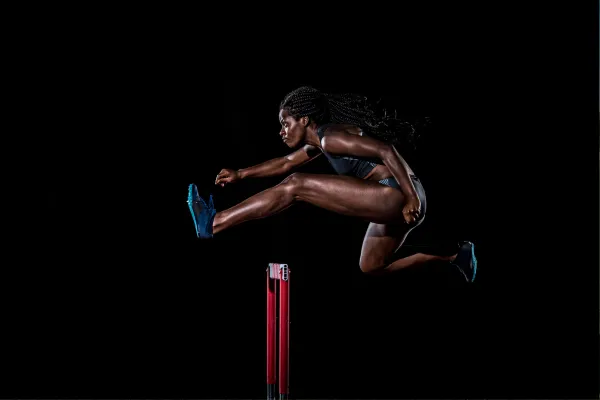More than training. It's an Edge.

How to Train Speed Under Load: Turning Gym Strength into Game-Day Power
At Athlete’s Edge, we’re all about bridging the gap between what you can do in the gym and how you perform in your sport. If you’re strong in the weight room but still feeling slow on the field, the missing link might be velocity.
This blog breaks down how to train speed under load, a critical factor in translating raw strength into usable, explosive game-day power.
What Is High-Velocity Training (And Why It Matters)?
High-velocity training is all about moving weight with speed - not just lifting heavy.
Think of it this way:
Traditional strength work improves your ability to produce force
Velocity-based work improves your ability to apply that force quickly
That second part is what creates explosiveness, acceleration off the mark, vertical jump, change of direction, and reactive power.
Without velocity in your training, you risk building strength that doesn’t transfer.
Building Velocity into Your Strength & Power Phases
High-velocity work isn’t something you throw in randomly. It’s layered strategically into your strength and power blocks.
Here’s how we do it at Athlete’s Edge:
Strength Phase:
Focus on max force production
Start to introduce lighter loads moved with intent (e.g. speed squats at 60–70% 1RM)
Power Phase:
Prioritise low-to-moderate loads at max velocity
Include plyometrics, trap bar jumps, medicine ball throws, and band-resisted sprints
Use timing gates, video feedback, or coaching cues to encourage intent
The key is this: Speed is a skill, and like any skill, it has to be trained with purpose.
Key Exercises and Cues for Max Intent
Some of our go-to high-velocity movements include:
✅ Trap bar jumps
✅ Band-resisted squats
✅ Weighted jumps and bounds
✅ Medicine ball chest passes and rotational throws
✅ Sprint drills with resistance or overload
Cues matter. You’re not just “lifting” here, you’re trying to move the load as fast as possible. We often cue:
“Explode off the floor”
“Punch the ground”
“Be elastic, not slow and grindy”
This intent is where the real gains live.
Common Mistakes to Avoid
A few things we see (and fix):
🚫 Loading too heavy - if it’s slow, it’s not velocity work
🚫 Poor sequencing - doing speed work after a fatiguing lift
🚫 Not measuring - you can’t improve what you don’t track
🚫 Confusing general jump training with true velocity training
We work closely with athletes to find the right load for maximum intent, not just maximum effort.
Safe & Effective for All Ages
Velocity work isn’t just for elite or adult athletes. It can be scaled for youth and junior athletes too - it just needs to be:
Age-appropriate
Well-coached
Built on solid movement foundations
We’ll often start with unloaded jumps, skips, and sprint drills, then layer in resistance only when movement quality is there.
Because fast, efficient movement is a skill best developed early.
Train Smarter with Athlete’s Edge
Whether you’re chasing a faster first step in footy, more vertical in netball, or better reactivity in basketball - high-velocity training helps bridge the gap between gym and game.
And we don’t just guess. We test, assess, and build every phase around your profile.
🎧 Listen to the Full Breakdown
This topic is unpacked in full on our podcast channel:
🎙️ EP.3 Athlete's Edge Podcast: Peak Velocity Training For Athletes
📌 Explore the podcast
Subscribe for expert performance insights, athlete interviews, and real-world strategies that work.
Ready to move faster where it counts?
Book your athlete testing session today and let’s build a program that transfers.
STAY CONNECTED
QUICK LINKS
GYM HEADQUARTERS
© Athlete’s Edge Albury – All Rights Reserved